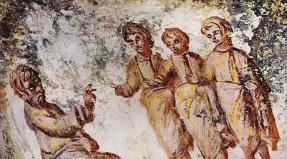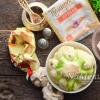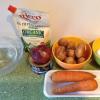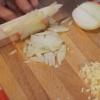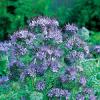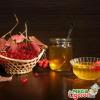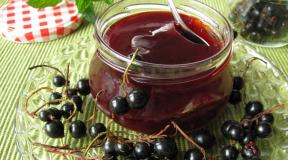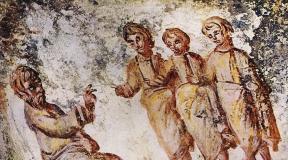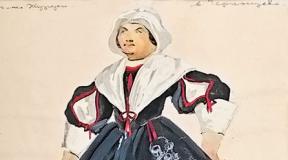Birch bed with chaga. Birch chaga mushroom (lat. Inonotus Obliquus). Main active substances of chaga
The oblique tinder fungus is known by the names chaga and oblique tinder fungus. Chaga has long been used as a remedy for gastrointestinal diseases; it is also used in the treatment of gastritis, stomach ulcers, precancerous diseases and some forms of malignant tumors.
Useful properties and applications
The tinder fungus is used in the form of a semi-thick extract (befungin), infusion or tablets (BIN-chaga). Birch mushroom increases the body's defense reactions, activates metabolism in the brain tissue, which results in an increase in the bioelectrical activity of the cerebral cortex, and has an anti-inflammatory effect when used internally and locally.
Polypore contains many biologically active and mineral substances that help our body resist or even get rid of many diseases. These are silicon, iron, aluminum, calcium, magnesium, sodium, zinc, copper, manganese, many potassium salts, water-soluble derivatives of phenolic aldehydes, polyphenols, polysaccharides, lignin, organic acids, etc.

When treating with chaga and its drugs, of course, you must first consult with your doctor.
Where to look for chaga
The fungus grows on the trunks of old birch trees and has the appearance of black, sometimes very large (up to 50 cm in diameter and 20 cm in height), cap-shaped, dense growths with black growths on top, which are called chaga. Their inner part is dark brown or brown, granular, closer to the wood - reddish-brown loose with white veins consisting of colorless hyphae penetrating deep into the wood.
Birch becomes infected with tinder fungus spores, which fall on the tree in places of fresh damage to the trunks, germinate and form a mycelium. The mycelium penetrates the wood and gradually destroys it. A growth forms, the mass of which by the age of 15 can reach 5 kg. Chaga can rarely be found on young plants. Sometimes the fungus develops on alder, rowan, maple, beech, and elm. However, such a tinder fungus is not suitable for medicinal purposes.

Best time to collect
Chaga is collected all year round, but raw materials harvested in autumn and early spring have greater medicinal activity. Over many years of research, we have become convinced that it is best to start collecting chaga after leaf fall and continue throughout the winter, when it is clearly visible on tree trunks. The growths are cut down with an ax or sawed off with a hacksaw.
Processing of harvested raw materials
Raw materials are used freshly collected or dried. Growths should not be collected from dried trees and the lower part of the trunk, since this raw material is inactive. They remove from the fruiting bodies not only the top layer covered with cracks, with ingrown parts of the birch, but also the loose inner, light brown layer. The dense middle part of the growths is prepared. Then it is cut into pieces no larger than 10 cm in diameter.
The raw materials are dried in well-ventilated areas or in a thermal dryer at a temperature of 50-60 0. Raw chaga can become moldy. Shelf life - no more than 2 years.
Hello, dear readers!
This article will discuss the benefits of birch chaga mushroom.
Chaga is a tree fungus that forms primarily on the trunks of damaged birch trees in the form of a convex black growth; less commonly it can appear on alder, elm, beech and maple. For medicinal purposes, only chaga grown on birch is used - mushroom forms collected from broken branches and bare trunk are of particular value.
How to determine that it is chaga in front of you
Very large chagas, weighing over 4 kg, are often found. The visible differences between the birch fungus and similar woody polypores are their irregular shape, external, deep cracks and an internal, scratch-resistant, dense structure of a light brown hue.
When and how to collect birch mushroom
Collecting mushrooms for tea consumption (brewing) can be done all year round, but for medical use, chaga cut in the spring months before the leaves bloom is considered more medicinal. When going to collect chaga for the first time, it is recommended to take a kitchen cleaver or hatchet with you - most growing specimens are very difficult to separate from the “parent” tree with bare hands.
Primary processing and storage of chaga
From the collected raw materials, only the solid parts of the growths are left: the mushrooms are cleaned of wood chips and bark and the loose inner part is removed. Then the chaga is cut into pieces of equal sizes and dried in an oven or ventilated attic. After drying, the pieces are placed for storage in tightly closed glass containers or plastic containers, which are placed in cabinets.
Particularly valued is the ash contained in birch mushrooms, which is saturated with easily digestible compounds of manganese, zinc, sodium, potassium, aluminum and iron. In addition, chaga contains acetic, formic, oxalic and other acids necessary for the functioning of the human body.
Chaga-based drugs are made that are biogenic stimulants that normalize metabolism, have an anti-inflammatory effect, increase immunity and stimulate the nervous system. Complex drugs are also produced that help slow the development of metastases, delay tumor growth, and act as a catalyst for increasing the activity of antitumor antibiotics. Also, preparations from chaga have diuretic, antispasmodic, antimicrobial properties, regulate the activity of the gastrointestinal tract, normalize the intestinal microflora, and have a positive effect on the healing of ulcers formed in the stomach and duodenum.
With the massive appearance of pharmaceutical products on the shelves, the significant role of natural medicine has been undeservedly forgotten. Just a quarter of a century ago, birch mushroom tea in thermoses could be found in every second fisherman, hunter, tourist, or in the teapot of drillers and geologists in taiga trailers.
Homemade decoctions made from chaga are also recommended for seriously ill people - they help lower venous and blood pressure, their use is indicated for gastritis and ulcers, significantly reduces pain and improves well-being.
Now you know What are the benefits of birch chaga mushroom?, but about how to prepare chaga at home, read the article “”. See you later, friends!
Chaga medicinal
Chaga, or birch mushroom (Inonotus obbiguus Pil.) is a sterile, sterile form of the beveled tinder fungus (sometimes spelled “oblique”). Widely distributed throughout the temperate zone of Russia. Lives 10-15 years, appears as growths, round or elongated, lumpy-cracked, irregular in shape, from 5 to 40 cm in diameter, dark brown or almost black in color, without shine; most reminiscent of pieces of brown coal. Over the years, the growth of chaga increases and increases, sometimes reaching 3-5 kg of weight (photo 1). Its fabrics consist of three layers. The color of their flesh, the closer to the center, the lighter it becomes. The outer layer is dark brown or almost black, the hardest.
From a medicinal point of view, it is the most valuable. Medium - brownish, dense, granular. The inner one is reddish with whitish spots of mycelium, the most loose. When harvesting chaga, it is usually removed as being of little value. The host of medicinal chaga (the photographs show young specimens of the fungus) are downy birch (photo 2) and warty birch, synonyms - drooping, weeping (photo 3).


Chaga also grows on rowan, alder, willow, oak, hornbeam and some other forest tree species. But only the one growing on a birch tree is medicinal, and it must be harvested from a living tree. Chaga growths from dead trees are no longer suitable for treatment. They lose their healing power and begin to collapse themselves, like this huge old chaga shown in photo 4. Chaga affects mainly mature trees, and is rarely found on young trees.


Fungal spores penetrate into the tree tissue through various wounds in the bark, which is clearly visible in photo 5 - the infection occurred through a broken twig, on which a chaga growth began to grow. And inside the trunk, starting from the site of spore infection, the hyphae of the fungus grow and form white central stem rot. And only after the death of the tree, on the side of the trunk opposite from the chaga, the fruiting body of the fungus appears; but the latter has no medicinal properties, so it is not of interest for harvesting.
Chaga can be harvested at any time of the year, but more often it is done in autumn, winter and spring; simply because it is easier to notice in a leafless planting on a tree. It is too hard to cut with a knife. From a height of up to two meters it is usually cut down with an ax. A few years after this, if the chaga is not too old and the tree is not too weakened, the growth may develop and grow again and be harvested once again.
Cutting down a tree to get chaga from a higher altitude is irrational and quite labor-intensive. To harvest growths located at a height above 2 m, it is easier to use a fork for trimming branches; invention No. 967389, which is described on the Gardens of Siberia website, Starostin page, in the article - “Fork for trimming branches and twigs.” Such forks are available in many urban landscaping farms, where they are used to care for the crown of trees in gardens and parks. They were not put on public sale, but such a fork is not difficult to make yourself. With its help, you can remove mushroom growths from a height of up to 10 meters or more in a matter of seconds. The loose, light-colored inner part of the harvested mushrooms is removed, then crushed into pieces and dried at a temperature of +50...60°.
Chaga contains: humic-like chagaic acid (up to 60%), polysaccharides (6-8%), steroid and pteroide compounds, phenols, lignin, fiber. In addition, it contains various organic acids: oxalic (up to 4.5%), formic, acetic, butyric, vanillic, paraoxybenzoic, obliquinic, inonoic, trithenic and others. It also contains a lot of organic compounds containing microelements necessary for the human body: silicon, iron, aluminum, calcium, magnesium, sodium, potassium, zinc, copper, manganese. The main active substances in chaga are chromogens, which are formed from phenolic aldehydes. The pterins they contain are the main therapeutic substances that act on various tumors, incl. cancerous.
In general, chaga acts as a biostimulant that improves metabolic processes. It soothes pain and improves well-being; in the initial stage of the disease, it can delay the development of the tumor, but does not completely cure cancer. Has a slight laxative effect. It is also used in the treatment of gastritis, stomach ulcers, polyposis, precancerous diseases, and some types of tumors. Such properties of folk medicine have been known for a very long time, since the reign of Vladimir Monomakh. The drug befungin is also produced from it. Chaga improves the well-being of cancer patients and has a stimulating effect on a weakened body. Used in the treatment of gastrointestinal diseases, peptic ulcers, gastritis, for the prevention and treatment of tuberculosis; calms the nervous system, increases performance. In Korea, chaga from yellow birch (a Far Eastern species of birch) is valued higher than ginseng. When treating with chaga, you should follow a dairy-vegetable diet, limiting the consumption of meat, fats, and completely excluding smoked meats, canned food, and sausages. Chaga is non-toxic, there are no contraindications for its use.
It is also used as an excellent healthy and tasty substitute for tea leaves. I met it in this capacity as a student, when in practice, in the forest, we brewed it instead of tea (using a similar technology). Both in taste and color, when brewed, it is very reminiscent of tea - the taste is slightly astringent, tart, pleasant. And later, on scientific expeditions, it was repeatedly necessary to use it instead of tea. I still drink it at least once a day. Invigorates, regulates the gastrointestinal tract, has a tonic effect on the entire body. Both tasty and very healthy. And most importantly, it perfectly restores strength.
A medicinal infusion of chaga is prepared as follows. Pieces of dried mushroom are soaked in water for 4-5 hours. As a result, they become soft and are easily crushed in one way or another (on a grater, with a knife, a meat grinder, etc.). The crushed mushroom is poured with the same water in which it was soaked (1:5) and heated to 50°C (not higher), then left for 48 hours, most conveniently in a thermos, filtered, and squeezed. The resulting thick extract can be stored for 3-4 days. Before use, it is diluted by half. Take it for tumors, anacid gastritis, as a general tonic, 3 glasses a day 30 minutes before meals. Chaga infusion is non-toxic and has an original, pleasant taste, but during treatment it is impossible to inject glucose intravenously and take penicillin. For gastritis with low acidity, pour 1 tablespoon of chaga powder into 1 glass of water heated to 50°C, leave for 6 hours (preferably in a thermos), filter, take 1/3 glass 30 minutes before meals. Course - 5-6 months.
Of course, the reserves of chaga in our forests, as a result of intensive collection, have noticeably decreased, especially at heights of up to two meters, but, nevertheless, it can often be found. And at a height of two to eight meters, even often. And those who do not have the opportunity to buy it at the pharmacy, if desired, can provide themselves with this medicine themselves. Remember that chaga is separated from the trunk with great difficulty, so a knife is not suitable for harvesting it; you need an ax or a fork to trim the branches. There are simply no other tinder fungi similar to chaga in the forest, the rest are all “hoofed” - of which the birch sponge is most often found on birches (photo 6).

And you can’t get poisoned by tinder fungi either. They are inedible, but not poisonous, many are even medicinal, for example, the same birch sponge, and some others.
Birch burls (photo 7), which sometimes appear on birch trunks - twisted growths of wood covered with bark, also do not look like chaga, and cannot be confused with it. Therefore, collect chaga with confidence.

But it is impossible to artificially cultivate it; not only is the process of infecting birches with spores of this fungus not yet developed, but the cultivation of chaga will take too long - one or two decades.
Ecology of health. Chaga increases the body's defense reactions, activates metabolism in brain tissue, lowers blood pressure
Chaga: use in folk medicine
Chaga is the fruiting body of a perennial tinder fungus reaching large sizes, which is a growth in the form of irregular outgrowths, sometimes stretched along the length of the trunk, with an uneven, broken surface, up to 0.5 m long and weighing up to 2 kg.
The tissue of the outgrowths is hard, dark brown, almost black, slightly lighter and softer near the wood; at the very base it is permeated with small yellow veins.
The areas adjacent to the trunk contain not only fungal hyphae, but also wood cells. The formation of the fungus occurs as follows: fungal spores penetrate the wood, gradually destroying it. At the site of initial penetration of the spores (most often these are the lower and middle parts of the trunks), a growth develops that protrudes from under the bark, which as a result ruptures.
The fungus causes white core rot on birch, similar to that produced by the false tinder fungus on trees. That is why for several decades chaga was considered a sterile form of the false polypore. The real fruiting bodies of the tinder fungus very often go unnoticed. They grow under the bark, which soon falls off in these places.
The growths can grow for 10 years or more, feeding on the sap of living birch, reaching a diameter of 50 cm. During their growth, they cause rotting in the middle of the tree trunk. On dead trees, chaga breaks down, forming different types of polypores that are unsuitable for treatment.
Mushrooms taken from the lower parts of tree trunks growing in a damp place or from dried trees are not suitable for consumption. Chaga can also be seen on fallen birch trunks, but after the tree dies, its development stops, and soon the fruiting body of the fungus itself becomes noticeable in the form of comb-like outgrowths of a brown-brown color.
Chaga should be learned to distinguish from false and real tinder fungi, having a hoof-like shape, growing on a birch tree with its plane down. Chaga tastes slightly bitter and odorless.
Where is chaga found?
Chaga is distributed in the European part of Russia, Western Siberia, the Far East, the North Caucasus and the Urals.
How does birch mushroom (chaga) reproduce?
Chaga reproduces by spores that germinate on the affected areas of the bark. It has been noted that old trees are more susceptible to infection by fungi, since over time the tree’s ability to form a wound nucleus, which prevents spores from penetrating into the wood, decreases. Growing conditions also play a big role; Thus, trees growing in the mountains are less often affected by tinder fungi, because their wood is denser.
How to collect and store chaga
The fruiting bodies of the fungus are used for treatment. They can be harvested all year round, but it is best in spring and autumn, when the activity of the fungus is higher. Some people prefer to harvest chaga in winter or late fall, when there are no leaves on the trees and the fungus is easier to spot.
The growths are cut off with an ax or hammer and the loose, light-colored inner part, unusable for use, is cut off. When collecting, it is necessary to ensure that the raw materials do not contain false and real tinder fungi, which differ from chaga by a tubular layer on the lower surface.
You should not collect raw materials from dry and drying trees, as well as specimens 1-1.5 m long and old, crumbling black mushrooms throughout their entire thickness.
Freshly cut growths are immediately cut into pieces measuring 3-6 cm and dried in the attic in a well-ventilated area; Also, pieces of chaga can be dried in a stove or oven at a temperature of 60 "C, spreading in a thin layer. You should pay attention to the fact that during the drying process, pieces of chaga become compacted and become very hard, almost black.
Dried chaga is stored in a tightly closed glass container for no more than 2 years.
Birch mushroom: chemical composition
Chaga contains water-soluble pigments in large quantities (20%), which form a complex that exhibits antitumor activity; pterins; polysaccharides (6–8%);
agaricic and humic-like chagic acids (up to 60%); organic acids, the total content of which is 0.5–1.3% (oxalic, acetic, formic, vanillic, lilac, p-hydroxybenzoic, as well as 2 triterpene acids from the group of tetracyclic triterpenes - inonotic and obliquinic); lipids (di- and triglycerides);
steroid substances(sterols - ergosterol, as well as tetracyclic triterpenes - lanosterol and inotodiol, which exhibit antiblastic activity); lignin; fiber; free phenols; flavonoids; coumarin peucedanin; cellulose; resins; ash (12.3%), rich in manganese;
other trace elements in the form of oxides: copper, barium, zinc, iron, silicon, aluminum, calcium, magnesium, potassium, sodium, with 5–6 times more potassium than sodium.
Medicinal properties of chaga
Only chaga that grows on birch has medicinal properties. Only growths growing on living trunks are suitable for medical purposes.
Chaga contains the following biologically active substances: ash, which includes oxides of silicon, iron, aluminum, calcium, magnesium, zinc, copper, sodium, manganese; acids: oxalic, formic, acetic, vanillic, etc.; free phenols, polysaccharides, lignin, fiber, sterols.
The drug befungin is made from chaga, used in the treatment of chronic gastritis and ulcers, and also as a symptomatic remedy in the treatment of cancer patients. This drug is especially indicated for stomach and lung cancer.
Determined that Chaga increases the body's defense reactions, activates metabolism in brain tissue, reduces arterial and venous pressure, has an anti-inflammatory effect not only when used internally, but also when used externally.
A decoction of the mushroom in a ratio of 1:5 has a hypoglycemic effect; the maximum decrease in serum glucose levels is observed after 2-3 hours, and blood sugar levels drop by almost 30%. It should be remembered that only a decoction from the inner part of the mushroom has such an effect, while a decoction from the outer part does not have this property.
Chaga is also used in otolaryngological practice as an adjuvant for laryngeal tumors in the form of inhalations for 5-7 minutes every day for a week. Chaga improves the general condition of the patient, facilitates swallowing and breathing, reduces hoarseness, thereby helping to reduce the inflammatory process and create optimal conditions for better studying the tumor for the purpose of biopsy and choosing a method of treating the tumor.
Birch mushroom is recommended as a general tonic and anti-inflammatory agent for diseases of the gastrointestinal tract, and also as a symptomatic remedy for various oncological diseases.
Chaga is prescribed for chronic gastritis, gastrointestinal disorders with symptoms of atony.
Birch mushroom is also used in the treatment of periodontal disease. Scientists have proven that chaga preparations are non-toxic. Treatment with birch fungus and products made on its basis is carried out in courses of 4-5 months with breaks of 7-10 days.
In the treatment of psoriasis, eczema and other skin diseases combined with various inflammatory diseases of the gastrointestinal tract, liver and biliary system, it is also recommended to use chaga preparations.
Chaga has the following properties:
Increase the body's defenses,
Stimulate the central nervous and neurohumoral (increase the activity of estrogen) systems of the body,
Improve metabolism, including activating metabolism in brain tissue,
Restore the activity of inhibited enzyme systems,
Regulate the activity of the cardiovascular and respiratory systems,
Stimulate hematopoiesis (increasing the level of leukocytes)
Has anti-inflammatory properties when used internally and locally,
Enhances the activity of antitumor drugs, delays the growth of tumors. Chaga restores the body's resistance and its defense mechanisms aimed at combating malignant growth. That is, there is an increase in the weakened functional properties of the body, which underlies the normalization of the vital functions of tissues and organs. In the absence of severe exhaustion in cancer patients, their life is extended from several months to several years.
In addition, chaga preparations have antispasmodic, diuretic, antimicrobial, healing properties, normalize the activity of the gastrointestinal tract and intestinal microflora, and promote scarring of stomach and duodenal ulcers.
Birch mushroom: use in folk medicine
A decoction of the mushroom lowers arterial and venous pressure and reduces heart rate. When used externally, chaga exhibits anti-inflammatory, healing and analgesic effects.
In folk medicine, birch mushroom has been known since the 16th century. It is used for diseases of the gastrointestinal tract, cancer, as a general strengthening and tonic.
Chaga has been used for:
- diseases of the stomach, intestines, liver and spleen
- oncological diseases
- insomnia, to calm the nervous system;
- metabolic disorders;
- after suffering serious illnesses and operations as a general tonic;
- to increase the body's resistance to infectious diseases;
- psoriasis, eczema and other skin diseases (wounds, injuries, burns, frostbite, juvenile acne, inflammation, peeling of the skin, insect bites, herpesvirus lesions of the skin and mucous membranes, leukoplakia).
Birch mushroom: use in medicine
The following chaga preparations are used for treatment:
“Befungin” is a semi-thick chaga extract with the addition of cobalt salts (1% CoCl2 or 1.5% CoSO4). Before use, shake the bottle, dilute 3 teaspoons of the drug in 150 ml of warm boiled water and then take 1 tablespoon 3 times a day 30 minutes before meals. Some authors recommend preheating the bottle with the extract to liquefy it by immersing it in water at a temperature of 60–70°C for 8–10 minutes, after which 2 teaspoons of “befungin” are diluted in 3/4 cup of warm water and taken according to the same scheme. The drug is stored in a cool place, protected from light.
Preparation of chaga infusion
The washed piece of mushroom is poured with cold boiled water to soften for 4–5 hours (do not throw away the water after soaking!). Then they are ground on a grater or passed through a meat grinder. The crushed mushroom is poured with boiled water at a temperature of 40–50°C, since at higher temperatures chaga loses its activity, at the rate of 1 part mushroom to 5 parts water (use water from the first soaking).
Leave for 48 hours in a dark, cool place with rare stirring (3-4 times). The infusion is filtered through 3-4 layers of gauze, and the remainder is squeezed out and water from soaking the mushroom is added to the extraction to the original volume. The infusion is good for 4 days. It is stored in a cool, dark place. Drink gradually 0.5–1 glass 1–4 times a day 30 minutes before meals (at least 3 glasses a day).
For the treatment of gastritis, gastric and duodenal ulcers, take the infusion 1 tablespoon 3 times a day 30 minutes before meals.
For tumors of the pelvic organs (rectal cancer, prostate cancer), warm therapeutic microenemas of 50–100 ml of infusion at night or 2–4 tablespoons 2 times a day are additionally prescribed.
For patients who are contraindicated from introducing large amounts of liquid into the body for diseases accompanied by fluid retention in the body, prepare a double-strength infusion (2 parts mushroom to 5 parts water) or it is recommended to use the infusion instead of tea or other drinks.
Chaga infusion for the treatment of gastritis
For the treatment of chronic gastritis with reduced secretory function, the infusion is prepared using the following technology: 1 tablespoon of chaga powder is poured into a glass, poured with warm water (40–50°C), and left for 6 hours. The entire infusion is drunk in sips 30 minutes before meals in 3 doses. The course of treatment is 5–6 months.
Chaga infusion to improve blood circulation
To improve blood circulation and restore the blood formula, use chaga extract, which is prepared using the following technology:
2 teaspoons of crushed mushroom are infused for 48 hours in 150 ml of warm boiled water and filtered. Take 1 tablespoon 10 minutes before meals. Treatment with chaga preparations is carried out in courses of 3–5 months with short breaks between them of 7–10 days.
When treated with a mushroom infusion, the patient is prescribed a predominantly dairy-vegetable diet, limiting the intake of meat and fats and excluding canned food, smoked meats, and spicy seasonings. You should also not administer intravenous glucose or use penicillin. Treatment with chaga drugs is carried out in courses of 3-5 months. with breaks of 7-10 days.
Birch mushroom: contraindications
Contraindications to the use of chaga are chronic colitis and chronic dysentery.
Reception of chaga infusion is limited for diseases accompanied by fluid retention in the body.
When treating chaga, the use of penicillin, which is its antagonist, is contraindicated., and intravenous administration of glucose. It is recommended to adhere to a dairy-vegetable diet and exclude sausages, smoked meats, canned food, spicy seasonings from the diet, limit animal fats, meat products, do not drink alcoholic beverages and do not smoke. published
Birch mushroom, or chaga - (Fungus betulinus) - belongs to the Hymenochaetaceae (Polyparaceae) family, class Fungi (Mushrooms).

After cutting the chaga, the pieces are dried in dryers or ovens at a temperature not exceeding 60°C.
Store chaga in a dry, well-ventilated area. In a warehouse - in bags, in a pharmacy - in boxes. Damp chaga quickly becomes moldy. The shelf life of raw materials is 2 years.
Properties of chaga
Thanks to its unique set of chemical compounds, chaga is a very effective biological stimulant that has a positive effect on metabolic processes, the nervous system and the body's immune responses. Chaga contains water-soluble chromogens - derivatives of phenolic aldehydes, polyphenols, hydroxyphenolcarboxylic acids and their quinones, as well as humic-like chagaic acid (up to 60%), polysaccharides (6-8%), lignin, fiber, steroidal, pteric compounds, organic acids (in including oxalic acid up to 4.5%), triterpene acids, free phenols, silicon salts, iron, aluminum, calcium, magnesium, sodium, zinc, copper, manganese, many potassium salts.Application of chaga
Chaga increases the body's defensive reactions in the experiment, activates metabolism in the brain tissue, which is manifested by an increase in the bioelectrical activity of the cerebral cortex. It has an anti-inflammatory effect when used internally and locally.Chaga is used as a general tonic and anti-inflammatory agent for diseases of the gastrointestinal tract and as a symptomatic remedy for tumors of various localizations (in experimental studies, chaga inhibits the growth of some tumors).
A decoction of the mushroom reduces arterial and venous pressure and slows down the pulse.
A decoction of birch mushroom in a 1:5 dilution has a hypoglycemic effect: the maximum decrease in the level of glucose in the blood serum is observed 1.5-3 hours after taking the decoction orally. Sugar levels decrease by 15.8-29.9%. It has been noted that a decoction from the inner part of the mushroom gives a hypoglycemic effect; a decoction from the mushroom bark does not have this property.
Chaga treatment

Chaga tincture
The preparation of chaga tincture is as follows: the mushroom is washed with water, then soaked in boiled water so that the body of the mushroom is immersed in water, and left for 4-5 hours. The mushroom is crushed, the water in which the mushroom was soaked is used for infusion. One part of the crushed mushroom is poured with 5 parts (by volume) of water remaining after soaking the mushroom, heated to 50°C. Leave for 48 hours, drain the water, and squeeze out the sediment through several layers of gauze. Water is added to the resulting liquid to the original volume. The infusion can be stored for 3-4 days. The infusion is used for gastritis. Chaga infusion is prescribed to patients with gastric and duodenal ulcers, 1 tablespoon 3 times a day 30 minutes before meals.
Chaga quickly relieves pain and dyspepsia, normalizes intestinal function, and increases overall tone. The positive effect of chaga on patients with gastrointestinal diseases is confirmed by X-ray data.
For tumors, chaga infusion is prescribed to adults at least 3 glasses per day in fractional portions. For pelvic tumors, in addition to oral administration, medicinal microenemas (50-100 ml) are prescribed at night.
In otolaryngological practice, chaga infusion is used as an adjuvant for laryngeal tumors in the form of inhalations for 5-6 minutes daily for 10 days. Treatment with chaga improves the general condition of patients, eliminates swallowing disorders, reduces hoarseness, improves breathing, reduces the accompanying inflammatory process, providing the opportunity to review the tumor for the purpose of biopsy and choose a method of further treatment. Chaga preparations are used in dentistry for the treatment of periodontal disease (injected into the gum pockets, taken orally).
Befungin
The medical industry produces a thick chaga extract, Befunginum. It has a positive effect on metabolic processes and promotes scarring of stomach or duodenal ulcers. The drug is also used for chronic gastritis and dyskinesia of the gastrointestinal tract with symptoms of atony. Befungin is prescribed orally; 3 teaspoons of extract are diluted in 150 ml of warm water and taken 1 tablespoon 3 times a day 30 minutes before meals. The daily dose of chaga extract is 3.3-3.5 g. Treatment with chaga preparations is carried out in courses of 3-5 months with breaks of 7-10 days. Chaga preparations are non-toxic.
Chaga tablets are also available. Take them 1 tablet. 4 times a day 30 minutes before meals.
Chaga tablets and befungin are used for psoriasis, eczema and other skin diseases; treatment is especially effective in cases where the skin disease is combined with various inflammatory diseases of the gastrointestinal tract, liver, and biliary system.
Chaga - contraindications
Contraindications to the use of chaga are chronic colitis and chronic dysentery.With long-term continuous use of chaga, sometimes there may be increased excitability of the autonomic nervous system, which disappears after discontinuation of the drug or when its dose is reduced.
When treating chaga, the use of penicillin, which is its antagonist, and intravenous glucose are contraindicated. It is recommended to adhere to a dairy-vegetable diet and exclude sausages, smoked meats, canned food, spicy seasonings from the diet, limit animal fats, meat products, do not drink alcoholic beverages and do not smoke.

